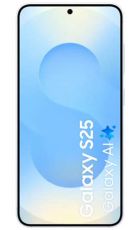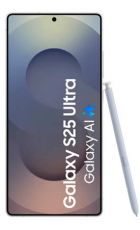The Samsung Galaxy Flip 3 is the first foldable device that Samsung has ever made that might appeal to a regular smartphone-buying audience.
It’s attractive, highly portable, and much less compromised in day-to-day use than previous Galaxy foldables. Crucially, it also comes in under £1,000 for the first time, with a starting price of £949.
That’s still a hefty investment, of course, and the Galaxy Z Flip 3 still feels like something of a luxury. But it’s the kind of luxury you might just consider treating yourself to.
Screen
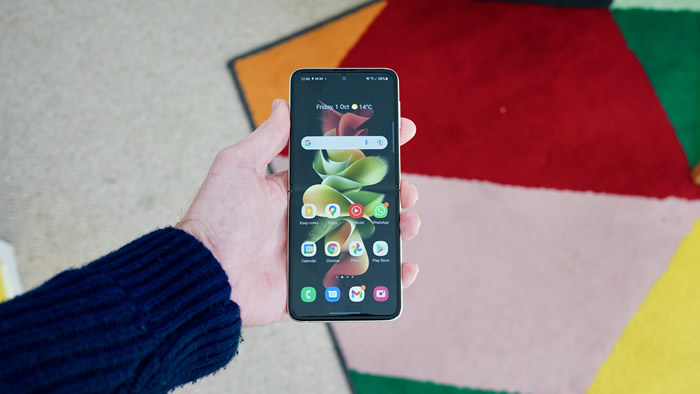
As with the Samsung Galaxy Z Fold 3, you’re dealing with two displays here – one internal, and one external.
The main internal display is a 6.7-inch Foldable Dynamic AMOLED 2X, which closely resembles a regular flagship phone screen when unfurled. Samsung still hasn’t managed to erase the crease from the middle of the display, which is a little distracting when scrolling through fine web text, but you grow used to it.
This is a well equipped display, with a 1200 nit peak brightness, a 1080 x 2640 resolution and a 120Hz refresh rate. That latter spec was sorely missing from the Samsung Galaxy Z Flip 5G, so it’s a welcome inclusion here.
The secondary Cover screen is also much improved over its predecessor. This time you get a 1.9-inch Super AMOLED with a 260 x 512 pixel resolution, rather than last year’s 1.1-inch 112 x 300 equivalent.
It’s actually usable this time around, giving you clear heads-up info like the time and battery status, as well as a handful of widgets for the weather, music, alarms, and the like. There’s a range of custom clock faces to choose from too.
Perhaps the most useful thing it can do, however, is serve as a camera view finder for vastly improved selfies. Other than that, we didn’t find ourselves using it all that much.
Design
.jpg)
The two might be related, but the Samsung Galaxy Z Flip 3 is a very different device to the Samsung Galaxy Z Fold 3. While the latter is a regular smartphone that expands into a mini-tablet, the Samsung Galaxy Z Flip 3 is a regular smartphone that contracts into a smaller but altogether less useful package.
That fundamental design difference gets to the core of perhaps our biggest issue with the Galaxy Z Flip 3. We’re not sure exactly what purpose it serves, beyond looking cool.
While the Galaxy Z Fold 3 might be unwieldy, its foldable nature serves a very clear function – to give you a large-screen experience in a device that can fit in your pocket. The Galaxy Z Flip 3, on the other hand, simply fits a little better into certain bags and pockets.
Questions of function aside, it really is a handsome piece of kit. When unfurled, its 166 x 72.2 x 6.9mm body makes it a very slim smartphone indeed. It’s not too heavy, either, at 183g.
When folded up it feels classy and jewel-like. It’s the only phone this writer has ever used that has prompted admiring comments and questions from total strangers, for whatever that’s worth.
Besides its unique form factor, part of that has to go down to Samsung’s delightful redesign. The two-tone look of the device is one of the most effective smartphone designs of the year, with the camera and secondary display stashed within a shiny black segment, and the rest of the surface given over to an off white (in our model at least).
The hinge is much improved on previous Samsung foldables, with minimal wobble and sufficient rigidity to provide a number of potential viewing angles. It really is a feat of engineering.
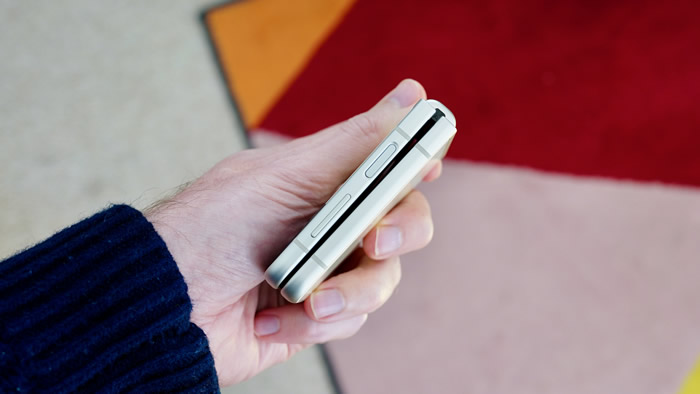
Perhaps the key compromise with the Galaxy Z Flip 3’s design is the lack of an IP68 rating. Instead you get IPX8, which means it’s water resistant, but still liable to letting dust into that hinge.
Power
As we’ve just mentioned, implementing a foldable form factor still involves a certain degree of compromise. But one area where you don’t have to accept any trade-offs is performance.
Samsung has fitted the Galaxy Z Flip 3 with the same Snapdragon 888 5G processor that powers almost every other flagship Android phone of 2021. Indeed, this makes it even faster than the global Samsung Galaxy S21 Ultra, which runs on Samsung’s inferior Exynos 2100 chip and costs a lot more
You don’t get as much RAM as the larger Samsung Galaxy Z Fold 3 (8GB as opposed to 12GB), but that’s still ample for multi-tasking, gaming and the like.
Talking of which, games like CoD Mobile run smoothly on high settings, and don’t feel compromised at all by the phone’s unorthodox form factor. You even get a solid set of stereo speakers.
Camera
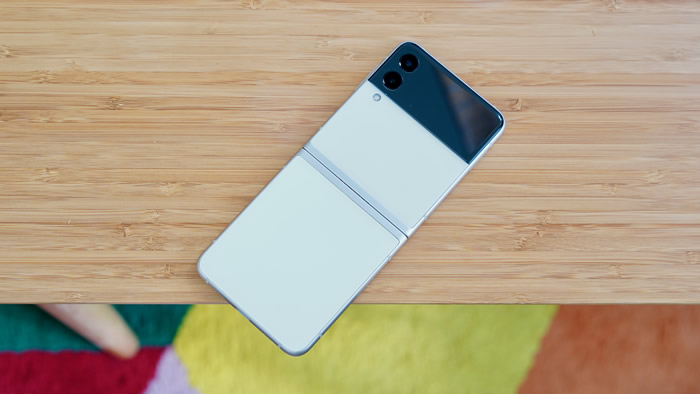
Where the Samsung Galaxy Z Flip 3 takes its first big backwards step in order to hit that compact foldable form factor is with its cameras.
The dual–12MP system provided is perfectly adequate, but you might feel justified in expecting more for your £1,000. You’d hope to get a dedicated telephoto lens at the very least, but such a thing is sorely missing from this set-up.
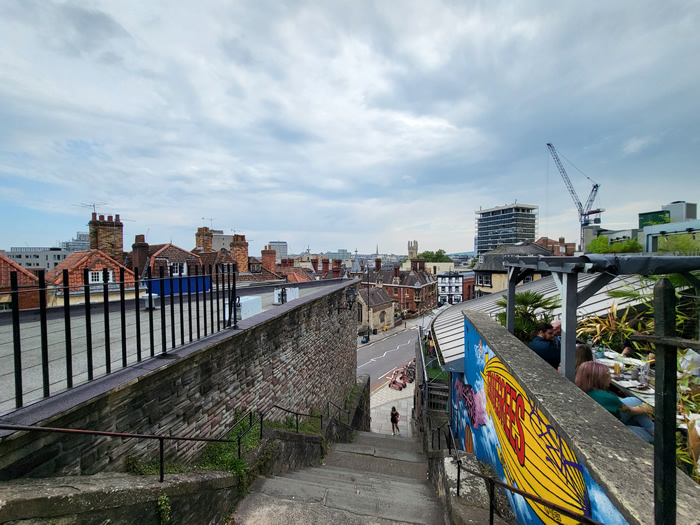
Rather, you’ll have to make do with a slightly pokey 1/2.55" 12MP wide sensor, backed by a similarly modest 12MP ultra-wide.
Don’t get us wrong, these sensor capable of taking bright, punchy shots in a variety of lighting conditions. Samsung’s colour science ensures that your shots are always full of life, and the night mode is capable of reasonably crisp and bright low light shots too, with the welcome assistance of OIS.

But with the likes of the iPhone 13 obtaining superior results with an ostensibly similar dual-camera set-up, and for much less money, you might expect better.
Samsung’s 10MP selfie camera is perfectly adequate at taking self-shots. But like we said before, the provision of that secondary display opens the possibility of much better selfies using the main camera.
One neat feature is the way the camera automatically pushes the image preview to the top screen when it detects that it’s folded, which is great for video calls, selfies, and super-stable manual shots with longer exposures.

Features
Samsung’s One UI isn’t everyone’s idea of a great custom Android UI, but it’s improved a fair amount in recent years, supplying less clutter and more cohesion.
You still get minor irritations like no Google Pay and Samsung’s own keyboard out of the box, but it’s a small matter to restore some of that Google goodness (or a third party alternatives) through the Google Play Store.
The company is also one of the best exponents of split-screen multitasking, which works out well with its foldable phones. The Flip 3 isn’t as well suited to the task as the Fold 3, but there’s still a certain amount of logic to running two apps either side of that display crease.
By dragging in from the right of the screen it’s easy to run Chrome and Gmail side by side (or top to bottom, as may be), or to continue a message thread whilst scanning through YouTube.
You don’t get S Pen support with the Flip 3, unlike with the Fold 3, which is a bit of a shame. It’s true that the latter’s tablet format makes more sense with Samsung’s stylus, but we’d have loved a more compact fold-out Galaxy Note equivalent all the same.
Battery life, memory and connectivity
The Samsung Galaxy Z Flip 3 runs on a 3300 mAh battery, which is decidedly tiddly by modern flagship standards. Most high-end rivals will go with a 4500 mAh unit or higher.
In practice, we did manage to get through a full day of light to moderate usage without too much worry, but there wasn’t much left in the tank come bed time.
Samsung has optimised the battery usage well, and that dual-display set-up is potentially a handy power-saving tool. If you’re keeping on top of your notifications through the smaller, less sharp external display, the idea is presumably that you won’t want to open the Flip 3 up so much.
In practice, though we didn’t end up using that limited Cover display all that much. Your mileage may vary.
Samsung doesn’t give out charging bricks with its phones any more. It shouldn’t be too expensive to supply the Galaxy Z Flip 3 with one though, as it only supports up to 15W, which is very slow for a flagship phone. It also supports wireless charging up to 15W.
Storage comes in either 128GB or 256GB guises. Again, this isn’t particularly huge compared to premium rivals, but nor is it stingy. There’s no expansion potential here.
Samsung hasn’t skimped on connectivity, thankfully, with full 5G support.
Verdict
The Samsung Galaxy Z Flip 3 is one of the most distinctively stylish phones on the market, with a superbly engineered folding system and a deeply chic design.
It’s the most accessible, tactile, and downright usable foldable phone we’ve seen yet, and it doesn’t compromise on power or the sheer quality of that fold-out display. Samsung’s decision to bring the price down to within regular flagship range is commendable too.
Despite our affection for the Galaxy Z Flip 3, however, it’s still not quite the finished article. There are clear compromises on design, camera quality, and battery life that more traditional flagship smartphones simply don’t ask you to make.
If you’re dying for something new and compact, though, the Samsung Galaxy Z Flip 3 could well be the most exciting phone of the year.


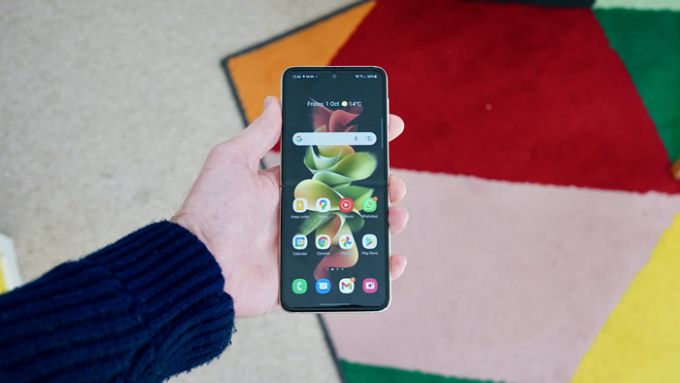

.jpg)





